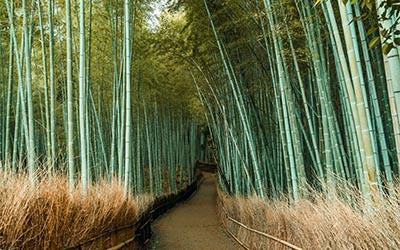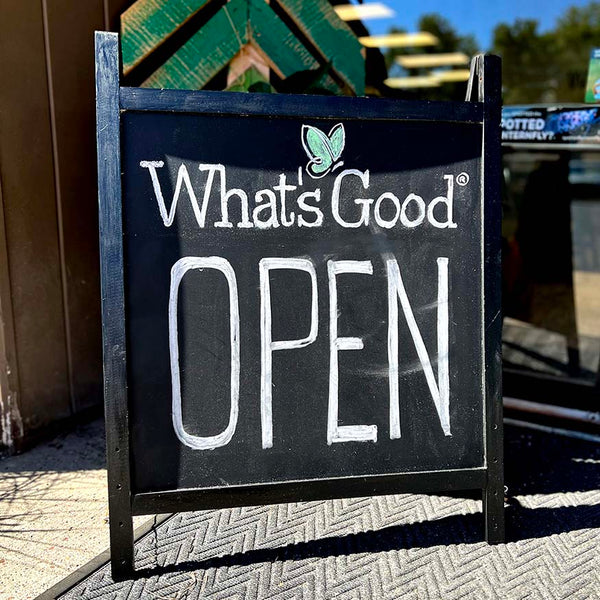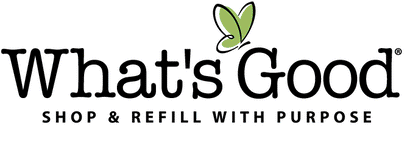FREE 🇺🇸 SHIPPING ON ORDERS $75+
FREE 🇺🇸 SHIPPING ON ORDERS $75+
Add description, images, menus and links to your mega menu
A column with no settings can be used as a spacer
Link to your collections, sales and even external links
Add up to five columns
Add description, images, menus and links to your mega menu
A column with no settings can be used as a spacer
Link to your collections, sales and even external links
Add up to five columns
To Bamboo Or Not to Bamboo
March 12, 2021

To Bamboo Or Not to Bamboo
That is the question, isn't it? Recently we've noticed bamboo products popping up more and more, and for a good reason. Bamboo is a highly versatile resource with many eco-friendly benefits. It's fast-growing, naturally renewable, and can be used in several different products and forms. Bamboo is found in high humidity climates across the world, including Southeast Asia, Africa, Latin America, and Southern Regions of the U.S. It's a raw material that can pave the way for renewable resources as we look towards the future. However, it isn't all sunshine and rainbows.
Like any resource, bamboo isn't perfect, and we need to understand what the detractors are to determine the viability of bamboo going forward. So let's take a look at bamboo.
The Good
In our quest to find eco-friendly raw materials, bamboo checks off just about every box. It's incredibly efficient compared to trees. Bamboo produces 35% more oxygen than a tree plot of similar size and can absorb more than 12 tonnes of Carbon Dioxide per year. In some cases, it grows extremely fast, up to 3 feet per day, taking a significantly shorter time to grow to full size than trees, and it doesn't require nearly as much water to grow as trees.
An important aspect of bamboo is it regrows from its roots. This may not sound important, but it means bamboo doesn't need to be replanted, saving energy and labor. It also means the soil and environment underneath the plant won't be disturbed when the bamboo is harvested.
Its versatility is something that cannot be understated. We see bamboo used as a raw ingredient in everything from clothes to homewares, even building materials. Since bamboo is a grass, it has no weak points and is more durable than hardwoods. As a building material, it's even stronger than steel.
As a raw material, bamboo sounds excellent, it's efficient in multiple ways, substantial, and can be located across the globe, but there are caveats. At the beginning of this, I warned about some downsides to bamboo, and from an environmental standpoint, it's hard to ignore these negatives.
The Bad
Like many cash crops, bamboo is often planted as a monoculture. This means it's the only crop grown in a plot. Monoculture crops all rely on the same nutrients and nutrient source, harming the bamboo if not enough nutrients are being replaced into the soil and disturbing the organisms and animals that depend on a diverse ecosystem. And maybe worse... native forests are clear cut to make way for this monocrop, displacing all the creatures that live and thrive there.
The production location is also a deterrent to widespread bamboo use. Currently, the only commercial production of bamboo occurs in China. I'm sure many of you can see where this is going, but we're contributing significantly to our carbon footprint by shipping bamboo overseas. We can remedy the climate impact of shipping if we're able to expand bamboo production. However, until then, it's essential to understand that although bamboo as a material is better than lumber, in some cases, it may be more harmful to climate change due to its carbon footprint from shipping. Chinese industry oversight, or lack thereof, cannot be understated either, and, although they don't need it, farmers are known to use pesticides on their bamboo crops. This lack of oversight also contributes to unfair or, at best, very questionable labor practices.
If we're trying to shop green, we want to avoid harsh chemicals in our products, no matter where in the process those chemicals are used. Currently, bamboo requires an intensive, chemical-heavy process to make pulp into usable fabrics. And although there is an alternate, greener process for this, it's still highly energy-intensive.
The positive here is these are all problems that, with some ingenuity, we can fix. That's what makes bamboo as a resource so intriguing. If we can eliminate the environmental risks of using it by improving supply chains, eliminating chemical use, and improving oversight, bamboo use's possibilities become almost endless.
Uses
At Shop What's Good, we have many of the essential products you need made from bamboo, like toothbrushes, utensils, straws, and chopsticks. Most of our bamboo products claim to be from sustainably harvested bamboo, and in the case of our kid's plates and compost bins, they're made from a plastic-like polymer using excess bamboo leftover from production. Excess that would normally end up in a landfill. We also don't believe in buying bamboo products that are glued together or epoxied to form a solid such as flooring or cutting boards. Therefore, all of the bamboo products you find on our site are made from solid bamboo.
Bamboo products can go much farther than just plates and utensils. Commonly used products like toilet paper and paper, structures such as houses, roads, and bridges, and even the abstract like motorcycles make up just the tip of the iceberg in terms of what we can use bamboo for.
What Should We Do
All of this information brings us back to our initial question: Should we or shouldn't we purchase bamboo products. The most significant issue we've discussed is the lack of oversight and a supply chain problem that plague the industry. But as a product, bamboo has tremendous potential. As with most environmentally friendly products, we need to do our due diligence to determine how sustainable a bamboo product is. Buying bamboo products that are solid and haven't been glued together is a great start. As we advance, bamboo seems to be on a positive trajectory allowing us to enjoy the products we've become used to while helping the environment in the process.
About the Author:
Henry Erbland is a graduate of SUNY Geneseo in western New York, where he studied economics. Most recently, he was a Peace Corps volunteer from Jamaica. When he's not creating content for What's Good (check out our new Eco Glossary), you'll find him out hiking, snowboarding, traveling, exploring restaurants — always with his camera.
Henry is passionate about social issues, especially climate change, and has logged many a volunteer hour in support. He says, "Every small step we take is a positive one towards ensuring a safe planet for future generations." See why he's a good fit for us? He may have time to help you, too. Check out some of his photos and his LinkedIn.
Photo credit to Adam Dillon.
Leave a comment

Good News
If any email is worthy of your inbox, it's this. Our goal is 1–2x per month. You'll get helpful & inspiring eco info, plus subscriber-only discounts.
Welcome to What's Good
Here's your $10 coupon
COPY THIS CODE TO USE IN CHECKOUT
